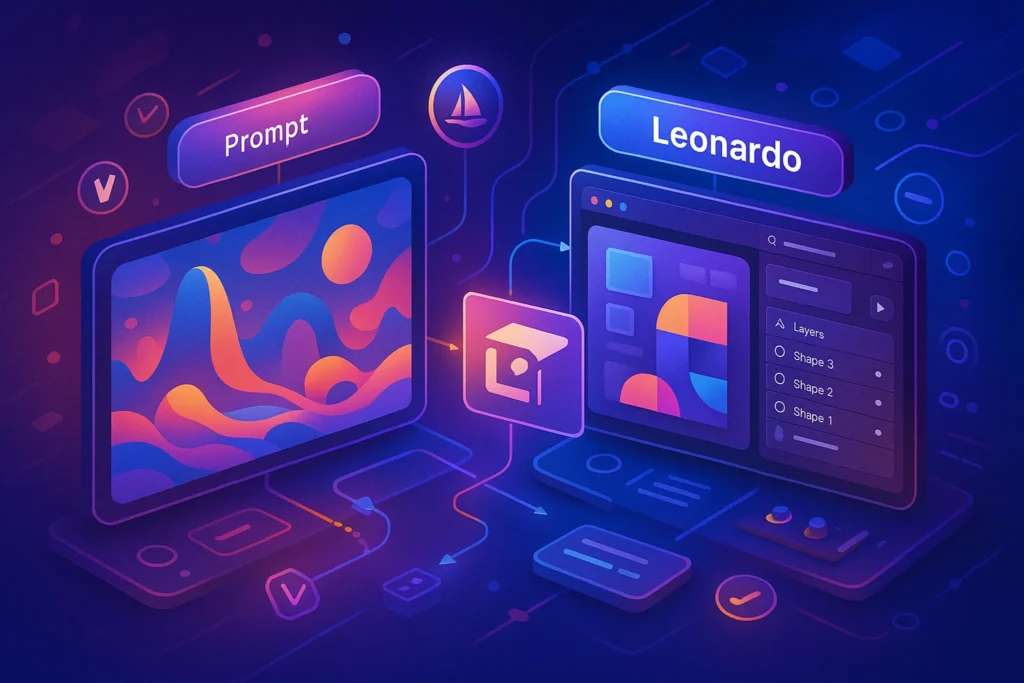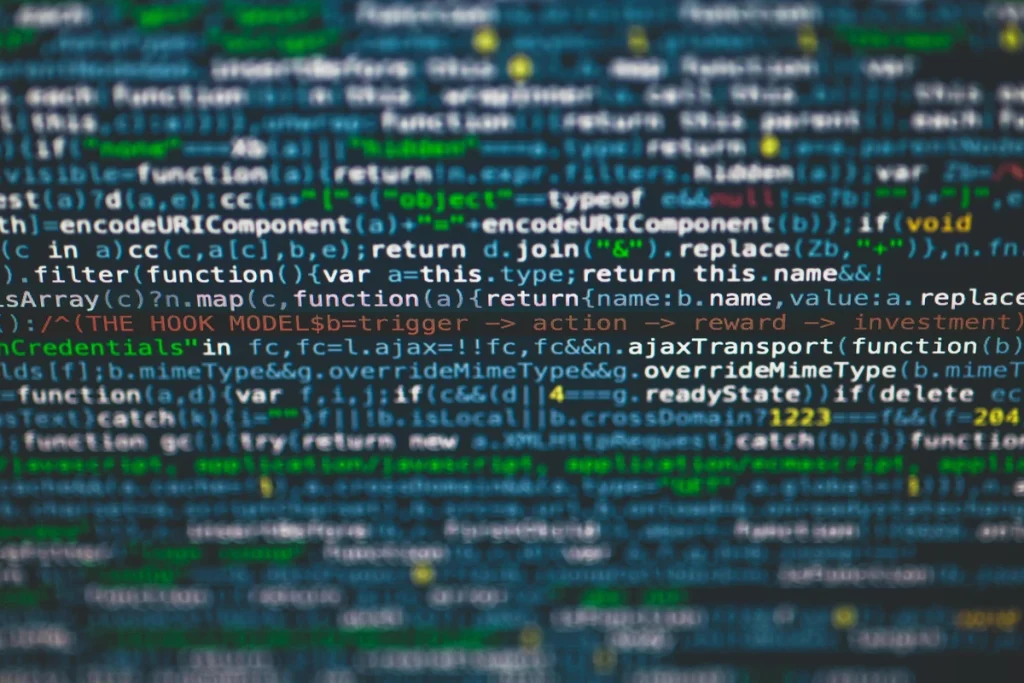-This post may contain affiliate links. If you click on one and make a purchase, I may earn a small commission at no extra cost to you.-
🧠 Introduction – AI Image Tools Powering Design Futures
AI-powered design tools like Midjourney and Leonardo AI are revolutionizing how designers create concept art, marketing visuals, UI mocks, and more. But which one offers the best balance of speed, style, usability, and output quality?
In this deep comparison, we’ll cover:
-
🎨 Output Style: Contrast aesthetics and trend alignment
-
⚡ Speed & Responsiveness: From generation to refinement
-
🛠️ Designer Workflow Fit: Interfaces, collaboration, export formats
-
💰 Value & Pricing: Free tiers, credits, subscription plans
-
✅ Use Cases & Verdict: Real examples and final recommendations
By the end, you’ll know which AI tool best complements your creative workflow—sign up for free, test both, and elevate your design game.
🎨 1. Output Style & Aesthetic
🔹 Midjourney
-
Known for dreamy, cinematic vibes with strong color grading, mood-heavy lighting, and painterly textures—great for concept art, mood boards, branding visuals, and marketing creatives.
Real-World Use Case: A designer built a “cyber-noir” game poster with dramatic lighting and color contrast in just 3 prompts.
🔹 Leonardo AI
-
Offers more stylized realism with fine detail, textures, and clarity—ideal for UI mockups, product visuals, and vector-style illustrations.
Real-World Use Case: Recreated a product packaging design concept with realistic textures and color control.
⚡ 2. Speed & Responsiveness
🔹 Midjourney
-
Uses Discord bots to generate images in a queue—especially busy hours can impact speed (~60–90 seconds). Upscaling and rerunning also uses credits.
🔹 Leonardo AI
-
Web interface offers live generation—results in ~30–60 seconds even on the free trial. Faster iterations make it ideal for quick conceptual testing.
🎛️ 3. Controls & Refinement Features
🔹 Midjourney
-
Parameter-rich prompts (
--ar,--v,--hd, etc.), upscale/re-roll buttons, and community remixing make it flexible.
Designer Tip: Use--v 5 --ar 3:2 --q 2for high-res UI concepts.
🔹 Leonardo AI
-
Offers “Advanced Mode” with layer-based prompting, sequenced frame generation (ideal for storyboards), and “Canvas” room for painting edits.
Designer Tip: The upscale brush tool and layers mimic Photoshop workflows, which is useful for refining mockups.
🧑💻 4. Designer Workflow & U/X Integration
🔹 Midjourney
-
Discord-based interface means less app integration—designers remix via community or local bot.
-
Ideal for quick inspiration and concept mood boards but needs external tools for compositing or collab.
🔹 Leonardo AI
-
Web-native, supports project folders, PSD export, team-sharing beta.
-
Output formats (PNG + PSD layers) make it ready for editing in Figma, Sketch, or Photoshop.
💰 5. Pricing & Value
🔹 Midjourney
-
Free Tier: ~25–50 image credits
-
Basic: $10/month – 200 images
-
Standard: $30/month – unlimited relax images + faster queue
-
Ideal for side-project designers and concept art.
🔹 Leonardo AI
-
Trial: 100 free credits (~50–100 images)
-
Creator: $25/month – 1,000 credits
-
Pro: $50/month – 5,000+ credits + team features
-
Great value for collaborative design teams needing layered outputs.
✅ 6. Usability & Community Support
🔹 Midjourney
-
Massive user-community on Discord—share prompts, style tags, and remixes.
-
Prompt guides and style showcase channels are invaluable learning resources.
🔹 Leonardo AI
-
Centralized platform with searchable asset gallery, style packs, and a budding Discord presence.
-
More tech-forward with clear onboarding, workspace management, and support docs.
🤝 7. Designer Collaboration & Scaling
🔹 Midjourney
-
Collaboration is mostly asynchronous—share Discord output, remixable prompts, and prompt logs.
-
Good for ideation but requires asset consolidation in design software.
🔹 Leonardo AI
-
Offers shared folders, asset export, PSD layer info, built-in comments.
-
Team & enterprise plans in beta, making it easier to launch multi-designer workflows.
🧠 8. Prompt Templates & Crafting Tips
Better prompts mean better output. Here are tested templates for each tool:
🖋️ Midjourney Prompt Templates
-
Concept Art Workflow
-
Mood Board Visual
-
Stylized UI Concept
🎨 Leonardo AI Prompt Templates
-
UI Mockup with Layers
-
Product Mockup
-
Storyboard Sequence
💼 9. Designer Case Studies
Case Study 1: Concept Artist — Sci-Fi Characters
-
Objective: Create 5 character portrait concepts for game design in 2 hours.
-
Tool Used: Midjourney
-
Process: Used prompt with mood (“cyberpunk”, “bashful expression”, “neon highlights”) and iterated using community remixes.
-
Outcome: Achieved mood-rich, professional-level concept art. Final designs polished in Photoshop.
Case Study 2: UI Designer — Mobile App Lo‑Fi Wireframes
-
Objective: Rapid creation of low-fidelity wireframes for client pitch
-
Tool Used: Leonardo AI
-
Process: Used layered prompts and canvas-editing to layout cards, navigation bars, input forms
-
Outcome: Exported PSD files, imported into Figma. Final wireframes validated with client, saving 4+ hours.
⚙️ 10. Efficiency & Workflow Optimization
A. Iteration Speed
-
Midjourney: Use the Discord community—remixing others’ prompts speeds ideation. Use refresh sessions to test style tweaks.
-
Leonardo AI: Work in Advanced Canvas Mode—layer-based editing streamlines adjustments without re-running generation.
B. Asset Management
-
Use a folder structure:
tool/date/project/variant.png; maintain prompt logs for reproducibility. -
Export Leonardo PSDs and import into Figma as editable layers.
-
Keep a prompt library in Notion, categorize by style and outcome.
C. Automated Backup
-
Use automation tools (e.g., Zapier) to periodically back up your design workspace:
-
Every new generation saves to Dropbox/Google Drive.
-
Keeps prompt text and output together.
-
💡 11. Community & Learning Resources
🔹 Midjourney
-
Active Discord channels like
#prompt-central,#style-gallery,#creative-collabs -
Community-sourced prompt library (
/imagine prompt: robust-v5-guide) -
Weekly challenges help challenge your prompt skills
🔹 Leonardo AI
-
Explore featured public galleries inside the platform UI
-
Follow “presets” created by other designers for UI, packaging, or storyboards
-
Join the beta of “Teams Workspace” to get collaborative features
📐 12. Advanced Comparison: Output Cohesion & Branding
-
Midjourney’s Cinematic Look
-
Excellent for storytelling visuals, branded promotional banners, mood boards
-
Strong color palettes and light manipulation give it emotional resonance
-
-
Leonardo AI’s Structured Precision
-
Ideal for e-commerce showcases, UI/UX mockups, and product presentations
-
High fidelity and PSD layer support mean quick downstream edits
-
🔁 13. Cross-Platform Consistency Tip
Deploy a Hybrid Workflow: Start mood exploration in Midjourney → import favorite result → refine in Leonardo AI using PSD layers. This creates unique visuals with cinematic base and editable output.
⚒️ 14. Troubleshooting Common Design Challenges
| Challenge | Midjourney | Leonardo AI |
|---|---|---|
| Inconsistent output proportions | Use –ar prompt flag |
Use fixed size templates |
| Overly abstract results | Add visual anchor like “futuristic smartphone UI” | Specify design function in prompt |
| Slow generation or queue delays | Use paid plan or non-peak hours | N/A – fast live results |
| Layer export failures | Export the best upscaled PNG and composite | Select PSD export explicitly |
📈 15. Pricing Value & ROI
A quick snapshot of value:
-
Midjourney Basic Plan – ~$10/month for concept bounce. If used 5–10 times weekly, delivers thousands of dollars worth of idea variance.
-
Leonardo Creator Plan – ~$25/month; ideal for structured mockups with layered PSD exports—a powerful rival to low-cost design software.
Bonus
Want to consider a different option? Check out our comparison: Midjourney vs DALL·E 3 for AI Art Generation: Which Should You Use? for another take on how different AI art tools fit your workflow.
🖼️ Side-By-Side Comparison Table
| Feature | Midjourney | Leonardo AI |
|---|---|---|
| Output Style | Artistic, cinematic | Stylized, texture-rich |
| Image Quality | High contrast & mood | High detail, vibrant depth |
| Generation Speed | ~60–90s (on free tier) | ~30–60s |
| Controls & Refinement | Parameters + Upscale/Remix | Advanced mode + animation |
| Interface | Discord-based | Web-native interface |
| Export Options | PNG, upscale to 2k–4k | PNG, PSD layers, AI-repack |
| Collab Tools | Community feeds & remixing | Teams workspace (Beta) |
| Free Tier | 25–50 credits | 100 credit trial |
| Sub Pricing | ~$10–30/month | ~$25–50/month |
❓ FAQ
Q1: Which tool is better for UI/UX mockups?
→ Leonardo AI—with PSD layers and canvas tools, it’s more practical for UI workflows.
Q2: Does Midjourney allow commercial use?
→ Yes—paid users have commercial rights. Read their Terms for full details.
Q3: Can I export layers from Leonardo AI?
→ Yes, PSD exports preserve layers and masks.
Q4: Is learning prompt style complex?
→ Both tools have a learning curve—Midjourney is prompt-heavy but powerful; Leonardo is more intuitive.
Q5: Which option is best for fast prototyping?
→ Leonardo AI edges for speed and export structure.
→ Midjourney is ideal if final delivery is a static visual with no further design layers.
Q6: Does Leonardo’s PSD export work in Figma?
→ Yes—Figma supports PSD imports retaining layer fidelity. Canvas tools facilitate partial edits.
Q7: Can I start with both free trials?
→ Absolutely! Compare 25 credits on both platforms to find vibe vs workflow fit.
🧠 Nerd Verdict
-
Choose Midjourney if you prioritize mood-driven, artistic, cinematic visuals with wide community inspiration.
-
Opt for Leonardo AI if you need detailed control, faster iterations, layered exports, and team-friendly features.
-
Midjourney wins for creative concepting, mood boards, and standout visuals.
-
Leonardo AI excels for structured, export-ready design assets and mockups that drop seamlessly into design pipelines.
-
Combine both with a cross-use strategy for optimal creative and delivery control.
👉 Both platforms offer free sign-ups. Take both for a spin and see which aligns with your design goals:
-
🔗 Try Midjourney (Free Trial)
-
🔗 Try Leonardo AI (Free Account)
💬 Would You Bite?
Tell us: Which AI image generator do you prefer—Midjourney or Leonardo AI?
Let us know in the comments, and share how you use them in your creative workflow. 👇



